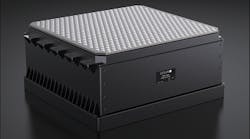Satellite communications (satcom) networks are capable of beyond line-of-sight (LOS) links for demanding defense applications but they must also depend on secure, reliable antenna systems. To serve their Space Broadband Networks-1 (SBN-1) satcom network, Saturn Satellite Networks selected the direct radiating antenna array technology from CesiumAstro for the advanced geostationary satellite network.
The active phased-array antennas employ multiple steerable and shapeable phased-array antenna beams for RF/microwave connectivity. The SBN-1 program employs six high-throughput satellites (HTSs) with innovative payloads that allow for satellite network operators to dynamically optimize their performance levels and services according to requirements. The geostationary satellite payloads will be developed in CesiumAstro’s facilities in Austin, Tex.
The $500 million SBN-1 program will operate in a power-optimized, thermally efficient multiple-beam configuration based on CesiumAstro’s direct radiating array technology. The independently steerable, shapeable antenna beams enable dynamically optimized services and performance levels as needed per service.
Payloads developed for the satellites by CesiumAstro will be integrated with Saturn’s low-cost geosynchronous-Earth-orbit (GEO) platform, the Intelligent Space Node (ISN). CesiumAstro has developed direct-radiating arrays in modular form for satcom applications from L-band through V-band frequencies, including its Vireo-GEO system (see image above).
Tom Choi, chairman and CEO of Saturn Satellite Networks, volunteered that “CesiumAstro’s direct radiating array payload technology tremendously increases our ability to provide coverage and power flexibility optimized to our customers’ needs, enabling a small GEO platform that can affordably deliver over 120 Gb/s. The direct radiating antenna design dramatically reduces the payload’s thermal dissipation requirements and eliminates the field-of-view restrictions in array-fed reflector designs which were proposed to us in the past.”
Choi added, "It maximizes the system’s value and flexibility, allowing us to tailor our services to match the users’ dynamic requirements while the satellite is on-orbit.”
